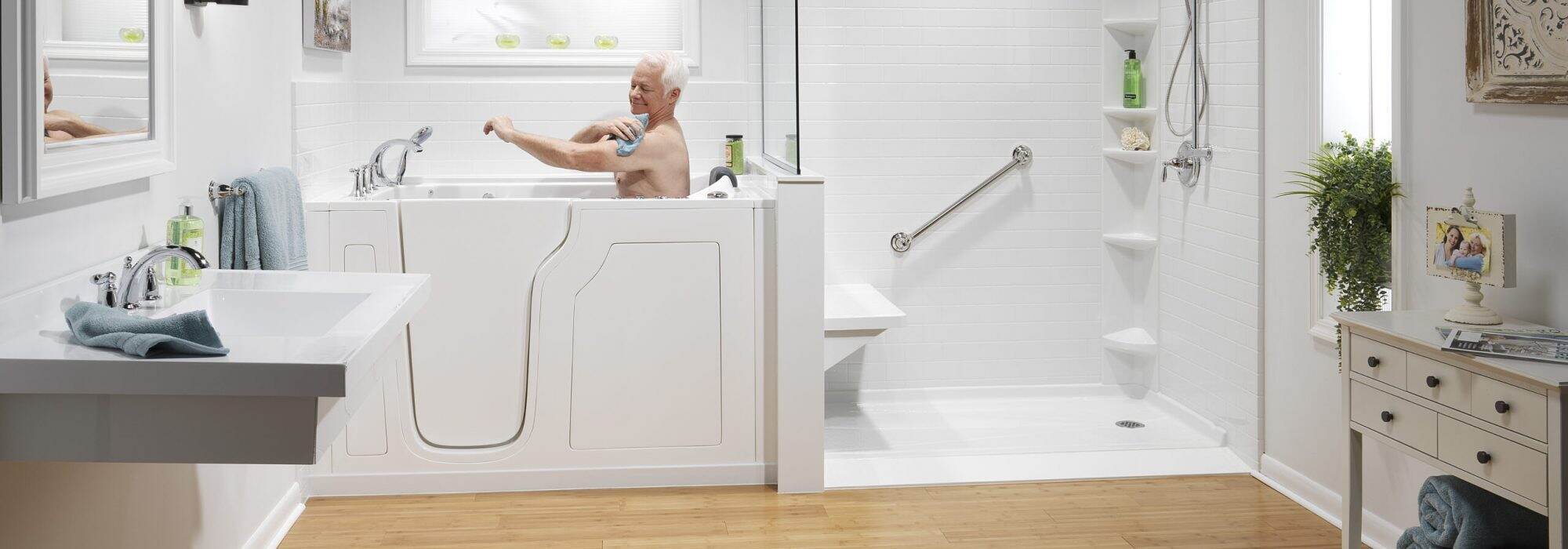Hydrotherapy Benefits
Jul 28, 2020Bring Hydrotherapy Benefits to Your Own Home
Whether you’re eager to relieve arthritis symptoms, want to nurse a sports injury, or are dealing with chronic back pain, sometimes a nice, long soak in the tub is just what the doctor ordered. Here are just a few of the conditions that can benefit from warm water hydrotherapy, and expert advice on how to get that relief at home.
What is Hydrotherapy?
Hydrotherapy is the use of water, either cold or warm, to treat any number of chronic or acute medical conditions. Professional athletes often use ice baths after strenuous training or to nurse an injury. At home, you can find relief from an aching back by taking a warm bath or shower. Both of these are forms of hydrotherapy.

Cold water hydrotherapy helps reduce swelling and inflammation, while warm water promotes circulation. Heating pads and cold compresses can both be used for these purposes, but the bathtub may be the best option for certain conditions. Soaking in a tub takes pressure off aching joints, and allows bathers to fully submerge the parts of the body that need relief. Additionally, gentle exercise in a bathtub or swimming pool can help bathers gain strength in a low-impact environment.
Hydrotherapy for Back Pain, Arthritis, and More
The Arthritis Foundation agrees that bathing as a form of hydrotherapy is a great option in addition to other treatments. Soaking or doing gentle movement exercises in warm water is “one of the oldest, cheapest, and safest forms of complementary therapy,” the Foundation says. Research has shown that heat treatment can loosen stiff joints and relieve achy muscles.
Consulting your doctor before beginning any new therapy is essential. The list of conditions where hydrotherapy is considered a useful complementary treatment is extensive, and may surprise you:
- Arthritis
- Cerebral palsy
- Fibromyalgia
- Heart disease
- Mobility and balance issues
- Multiple sclerosis
- Neuropathy
- Parkinson’s disease
- Pregnancy
- Sprains and strains
- Stroke
- Tendonitis

Hydrotherapy at Home
To take advantage of hydrotherapy benefits at home, simply turn to your bathroom. Here are three great options for regular hydrotherapy at home:
- Standard Bathtub: Use your existing bathtub as an easy place to soak, relax, and gently exercise aching joints and muscles.
- Walk-in Shower: An improved option if climbing in and out of a standard bathtub is too difficult. Add a shower seat or bench so you can sit during hydrotherapy sessions. A handheld shower head makes it easy to direct the flow of water exactly where you need it.
- Walk-in Tub: The best option for hydrotherapy with chronic conditions. Walk-in tubs feature a built-in safety seat, and are taller than standard tubs so you can submerge your body nearly to your shoulders. Built-in grab bars and optional jets can enhance your hydrotherapy sessions. And like standard bathtubs and showers, walk-in tubs can be used for regular bathing as well.


Physical therapists say the body usually gets maximum hydrotherapy benefits after soaking for 20 minutes. Bath water should be between 92 and 100 degrees F. Water that’s too hot can stress the heart and puts bathers at risk of scalding and burns.
Learn More About the Right Bathing Options
If you’re experiencing conditions that challenge your mobility or cause pain, check with your doctor to see if hydrotherapy is a suitable option. An Improveit team member can help you determine the best bathing option so you can always have a convenient hydrotherapy solution home. Schedule a convenient, free appointment to learn more!
Looking for more information and a quote on installing a new safe bathing tub or shower system? Fill out the form below and an Improveit team member will reach out to answer your questions.









